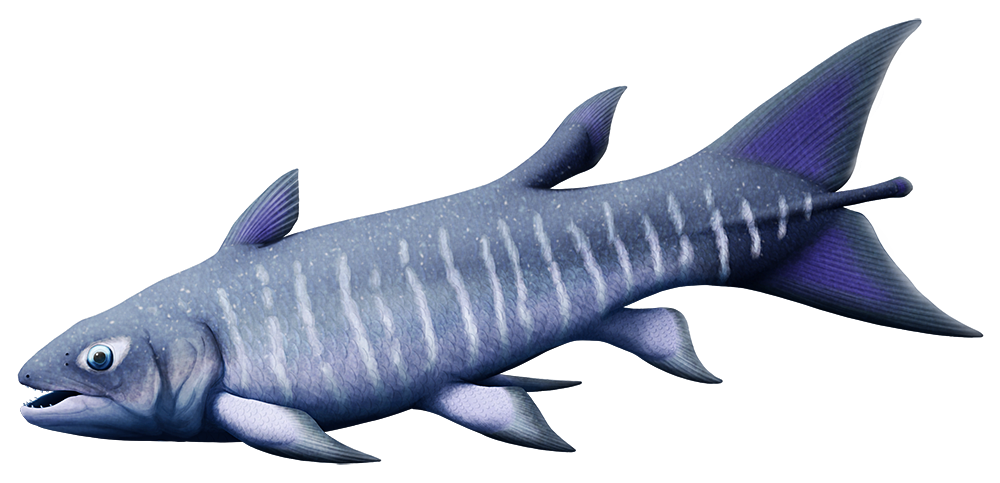Coelacanths are represented today by just two surviving species, one in East Africa and one in Indonesia, both very similar in appearance and ecology to each other.
For a long time their lineage was thought to be all “living fossils“, retaining the same basic body plan for the last 400 million years – but more recent discoveries have revealed that these fish were actually much more diverse over the course of their evolutionary history.
Holopterygius nudus was a fairly early member of the group, living during the mid-Devonian about 385 million years ago. The only known fossil specimen was discovered in Germany in the 1970s, but it was originally thought to be a different type of fish entirely and wasn’t identified as being a coelacanth until over 30 years later.
And compared to its living relatives it was tiny, just 7cm long (2.75″), with a distinctive tapering eel-like tail. Its convergent close resemblance to modern cusk-eels suggest it may have occupied a similar ecological niche, living near the sea floor and hiding in tight spaces like crevices and burrows.


